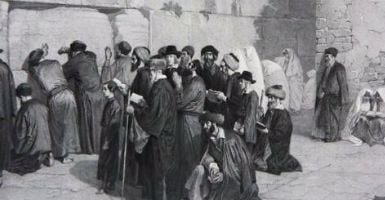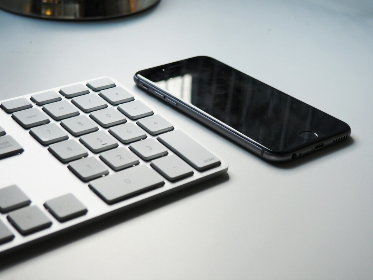Beshalach 5780
“See that Hashem has given you the Shabbos; that is why He gives you on the sixth day a two-day portion of bread. Let every man remain in his place; let no man leave his place on the seventh day.” (Shemos 16:29)
The Gemara in Eruvin (17b) considers this Pasuk to be the source for the Melacha[1] of Hotza’ah[2] – carrying from a public domain (Reshus haRabim) to a private domain (Reshus haYachid) or vice versa. Many Jewish communities erect an Eruv around their town or neighborhood[3] so that they may transport items on Shabbos from one place to another. However, not every Jewish community in Chutz la’Aretz has a Kosher Eruv.
The Melacha of Hotza’ah does not apply to items that are “Bateil” to the body. It is permissible to go out while wearing jewelry or clothes, including a hat or belt. In many communities where there is no Eruv, if a person needs to carry a key on Shabbos, he inserts it into a specially manufactured belt where the key in effect acts as the clasp.
Chaza”l also enacted the Issur of Muktza, which forbids the act of moving certain items on Shabbos (even within one’s house or other private domain). There are several categories of Muktza – items whose defining characteristic is that they are not naturally set aside for Shabbos usage. This may be because they are chiefly used to perform an act that is forbidden on Shabbos (“Kli sheMelachto l’Issur”[4]), or that one would only use them for their specified usage due to the fear of them breaking (“Muktza Machmas Chisaron Kis”), or that they have no usual function at all, such as a stone or branch (“Muktza Machmas Gufo”[5]).
There are various reasons offered for the Issur of Muktza (see Mishna Berura, Introduction to 308). The Sheiltos in this week’s Parsha (Sheilta 47) asserts that it was based on the Pasuk that states that the Jewish People were commanded to prepare all of their food on Friday in order to be ready for Shabbos. This command alludes to the necessity for all items to be “prepared for Shabbos usage”[6], hence the Issur of Muktza.
The most common question for doctors and Hatzala members related to the Issurim of Hotza’ah and Muktza is whether they may carry a device on Shabbos that notifies them of medical emergencies?
Rav Moshe Feinstein zt”l (Igros Moshe O.C. 4:81) discussed this question with regard to walkie-talkies (and pagers) worn by Hatzala members who were on call on Shabbos. Rav Moshe ruled that they were permitted to attach the device to their garments in order to carry them on Shabbos as they constituted a “Tachshit” – an ornamental item[7], for they indicated that those who wore them were fine, altruistic people who would help people in need. Moreover, given that these devices are considered a “Tachshit”, it is permitted to wear them even though they were only needed in case of emergency and there is not a definite reason at any given time to carry one, especially as Hatzalah calls are frequent.
Rav Moshe also noted that it would be difficult to rule that medical personnel who are on call and members of Hatzala should remain at home all of Shabbos in order to remain with their devices. In fact, this might discourage people from joining organizations like Hatzala in the first place. Therefore, we should rule leniently in this matter.
Rav Moshe’s primary reason for ruling leniently was that a walkie-talkie or pager constituted a Tachshit as it indicated that its owner was a virtuous person. This reasoning is no longer applicable today. Medical personnel now use regular mobile phones to be in contact – devices that are used universally and which do not portray their owners as virtuous in any way.
The Nishmas Avraham (301) cites Rav Shlomo Zalman Auerbach zt”l who only permitted transporting a beeper (or cell-phone) on Shabbos on a street that was not an absolute Reshus haRabim, and only by means of a Shinuy (an unusual method of carrying[8]). When traveling to treat a patient who is dangerously ill, he ruled that it is permissible to carry the device (with a Shinuy) even in a Reshus haRabim. Where there is no medical emergency and there is no option but to walk in a Reshus haRabim, the person must stay at home with the device in order to remain on call. He also cites Rav Yehoshua Neuwirth zt”l who held that when utilizing a Shinuy and avoiding a Reshus haRabim, it was permitted to travel with a device to perform a Mitzva such as attending a Minyan or Shiur. Many doctors who live in places where there is no Eruv choose to leave an additional device in Shul in order to avoid the issues of carrying on Shabbos.
However, where there is an Eruv, a person may carry a device in the regular fashion. Furthermore, it is not considered to be Muktza, for although the majority of Poskim hold that a cellphone is a Kli sheMelachto l’Issur (Shemiras Shabbos keHilchasa 28:34), in this case, the usage of the device will be permissible as he will be using it to save lives. It cannot therefore be defined as a Kli sheMelachto l’Issur[9].
In any case, according to Rav Shlomo Zalman, carrying a device in a Reshus haRabim on Shabbos is problematic. When traveling on a street that is not a Reshus haRabim, a person may only transport it if he is going to perform a Mitzva and he must employ a Shinuy. However, Rav Asher Weiss Shlit”a ruled that a doctor is on call for matters that may be Pikuach Nefesh may carry a device in the Reshus haRabim if he uses a Shinuy (such as hanging it on a string around his neck).
We would like to propose a possible solution to the Halachic issue of carrying in places without an Eruv. We will begin by summarizing the Halachos of wearing a wristwatch on Shabbos.
The Poskim rule that a functioning wristwatch is not Muktza, but a broken watch may only be worn if it can be considered an item of jewelry (a Tachshit) such as one made of gold or other precious materials. As for wearing a watch in a Reshus haRabim, some Poskim forbid it (even if it is functional) unless it is also a Tachshit. However, the Chelkas Yaakov (1:67 & 89), Igros Moshe (O.C. 111) and Rav Shlomo Zalman Auerbach (Shemiras Shabbos keHilchasa 18, footnote 113) all rule leniently[10] as they consider a watch in our times to be no different than an item of clothing (“Derech Malbush”). This is also the ruling of Rav Asher Weiss Shlit”a.
Nowadays, smartwatches have become widespread. Aside from simply displaying the time, these devices can provide a host of information and receive and transmit messages. If they do not require any act (such as pressing a button or motion) in order to display the time, they may be worn on Shabbos just like a regular watch and are not Muktza. One must only ensure that all of their other functions are disabled.
Why does the fact that the smartwatch can also perform many functions that are forbidden on Shabbos not render it Muktza? The answer is that if an item can perform both functions that are permitted on Shabbos and those that are forbidden, and it is impossible to divide them (by dividing the item), it is not considered to be Muktza[11]. Since it is impossible to use the permitted function without moving the forbidden one, it is as if the entire item is set aside for permitted Shabbos usage. (This is the conclusion of the Poskim cited by the Piskei Teshuvos O.C. 308. However, the Piskei Teshuvos does caution against a blanket lenient ruling, as the widespread use of items whose primary intended function is forbidden on Shabbos, may cause a breach in the observance of Hilchos Muktza in general.)
Therefore, if a smartwatch displays the time at all times and doesn’t require activating, one may wear it on Shabbos in spite of the many functions that it offers which are forbidden on Shabbos, as long as the other sensors and functions (e.g. GPS, activity, heart rate, etc.) are deactivated. It would also be permitted to wear it in a Reshus haRabim according to the Poskim who permit wearing a regular watch there too.
As technology advances, and smartwatches with cellular connectivity become available, this may be an excellent solution for medical personnel who need to be reachable during Shabbos and live in areas without Eruvin. Assuming that all other functions, aside from messaging and calls, are deactivated, there seems to be no reason to forbid it. We presented our solution to Rav Asher Weiss and he agreed with these conclusions.
From the practical perspective, battery life, especially with an “always-on” display and an active cellular connection, is very limited, and the watch would need to be charged over Shabbos, possibly multiple times. Further technological developments and halachic analysis of charging methods (e.g. wireless charging or connecting the charger with a Shinuy) are necessary before this solution could be reasonably employed.
In summary, the following criteria would need to be met for a smartwatch capable of independently receiving and transmitting messages and calls to be a practical, Halachically-acceptable solution to the issues of Hotza’a and Muktza:
- The display must be “always-on” such that the basic timepiece function of the watch is active at all times.
- All other sensors and non-Pikuach-Nefesh-related functions are disabled.
- Battery charge must last throughout Shabbos or a Halachically-permissible method of charging must be available.
[1] See Mishnah Shabbos (7:2) where Hotza’ah is included in the list of the 39 Melachos.
[2] See Shabbos 49b and 96b where Chaza”l offer alternative sources for this Melacha. According to Rashi, the Gemara’s conclusion is that this Pasuk does not serve as a basis for the Melacha, but Tosfos and other Rishonim hold that it does.
[3] Invariably, large scale Eruvin rely on the use of Tzuras haPesach which presents a problem when there is a suspected Reshus haRabim running through the area, since a Reshus haRabim invalidates an Eruv that uses Tzuras haPesach on anything other than the “Ruach Revi’is” (the fourth side of the Eruv). Famously, the Poskim disagree on the definition of a Reshus haRabim. Some hold that it is any thoroughfare that is 16 Amos wide while others maintain that 600,000 people must travel on it every day. Further details are beyond the scope of this essay.
[4] Which may only be moved in order to use the item for a permitted purpose (“l’Tzorech Gufo”), such as using a hammer to crack nuts, or to use the space that it occupies (“l’Tzorech Mekomo”).
[5] Which may only be moved if it had been set aside before Shabbos for a specific use and under specific conditions.
[6] This could be the basis for Muktza Machmas Gufo. A classic example of something that is “unprepared” for Shabbos usage are figs that are drying on a roof. If they were not fit to be eaten when Shabbos began, they are Muktza.
[7] Similar to an item of jewelry.
[8] Such as attaching it to his garments or carrying it under his hat.
[9] The Nishmas Avraham (ibid.) also raises the possibility of incorporating the device into a belt, as is commonly done for keys – “where the device will be an integral part of the belt (in other words it will be impossible to close the belt without it)”. He asked Rav Shlomo Zalman zt”l whether doing so would allow a person to transport the device in a Reshus haRabim and he replied that if he was traveling to perform a Mitzva and that he was likely to be contacted about a person who was dangerously ill, it would be permitted. This ruling also appears in Shemiras Shabbos keHilchasa (40:16). However, the wording there is confusing as it implies that it is sufficient if the device is an integral part of the belt and not that it must serve as the clasp, in contrast to the wording of the Nishmas Avraham who requires the device to be an integral functional component of the belt. In any case, it is difficult to conceive of how a belt using a phone in this manner could be designed, so it may not be possible to rely on this ruling in practice.
[10] Though Rav Moshe recommends that a “Ben Torah and Yirei Shamayim” should act stringently.
[11] Therefore, a pocketknife that also has scissors and nail-clippers, a Bentcher with a pen attached, or a digital calculator watch are not Muktza.















Add comment